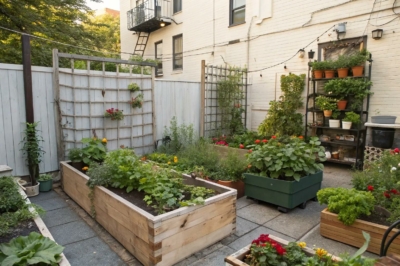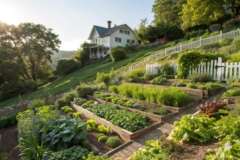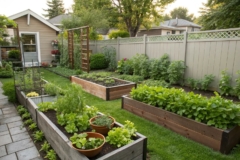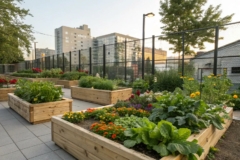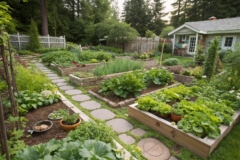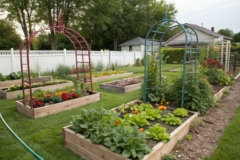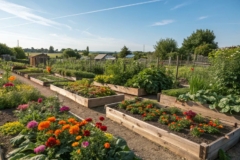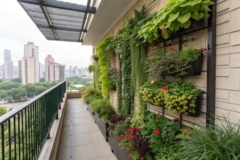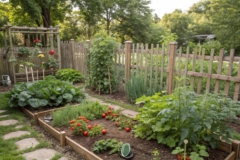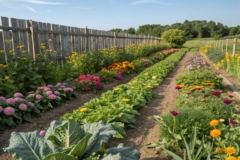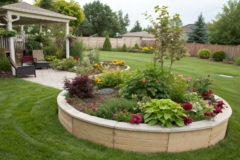1. Innovative Pallet Gardens
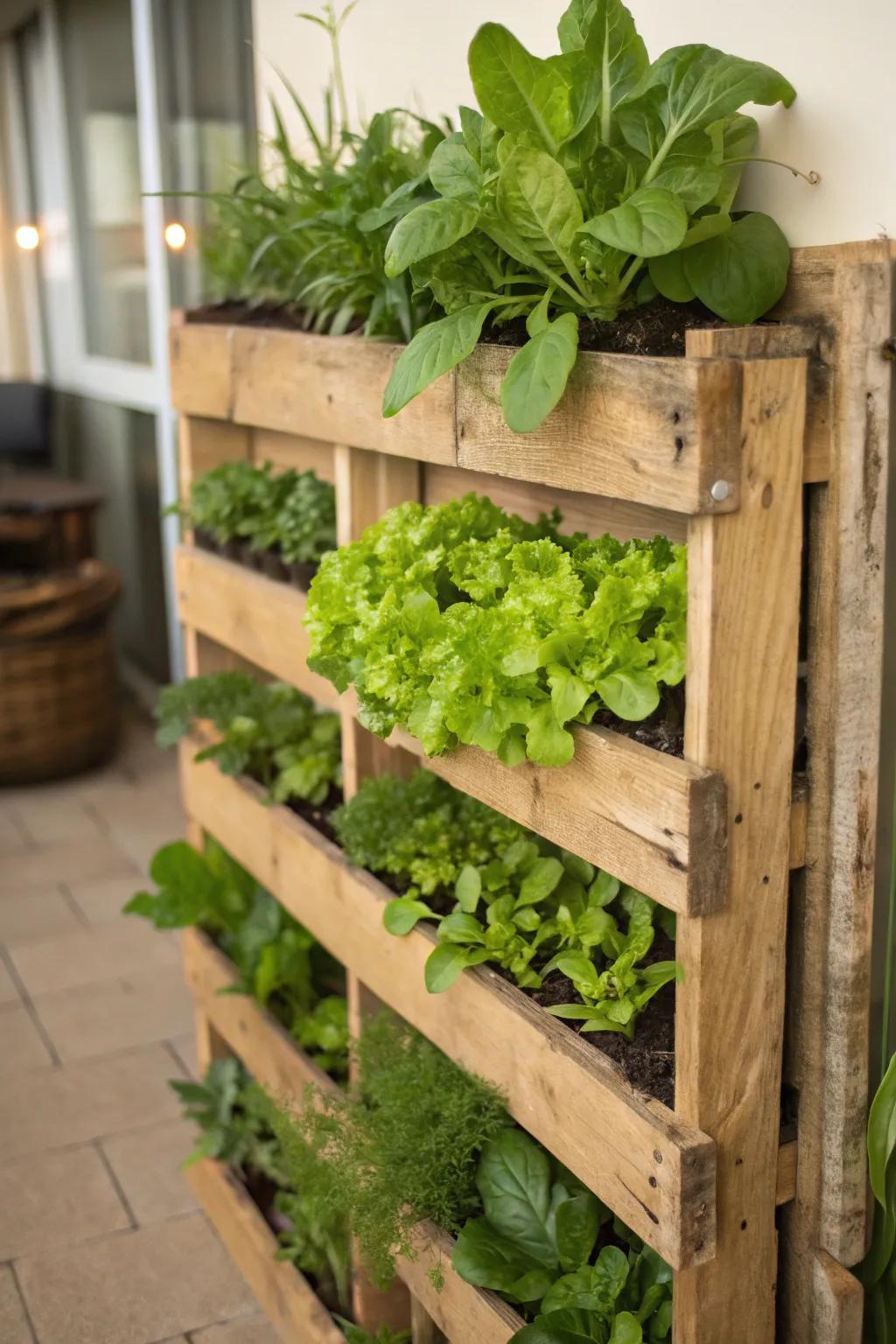
A wooden pallet can be turned into a vertical garden with a little effort. I used one to grow lettuce and spinach, and it’s both effective and stylish.
Some handy options:
- Geotextile Fabric for Planters: Enhance your vertical garden with durable fabric, ensuring optimal plant growth and soil retention.
- Wall-Mounting Brackets: Secure your wooden pallet garden with sturdy brackets, providing stability and safety for your vertical plants.
- Herb and Vegetable Seed Packets: Start your pallet garden with diverse seeds, enjoying fresh herbs and vegetables at your fingertips.
2. Stacked Pots for Small Spots

Stacked pots create a tiered garden effect, perfect for herbs and small veggies. I’ve stacked mine to save space and add visual interest.
Maybe worth checking out:
- Tiered Stackable Planters: Maximize space with stackable planters, perfect for herbs and veggies on your balcony.
- Herb and Vegetable Potting Soil: Enhance growth with nutrient-rich soil for your herbs and veggies in stacked pots.
- Self-Watering Insert Discs: Ensure consistent watering with insert discs to maintain moisture in stacked planters.
3. Raised Bed Bliss
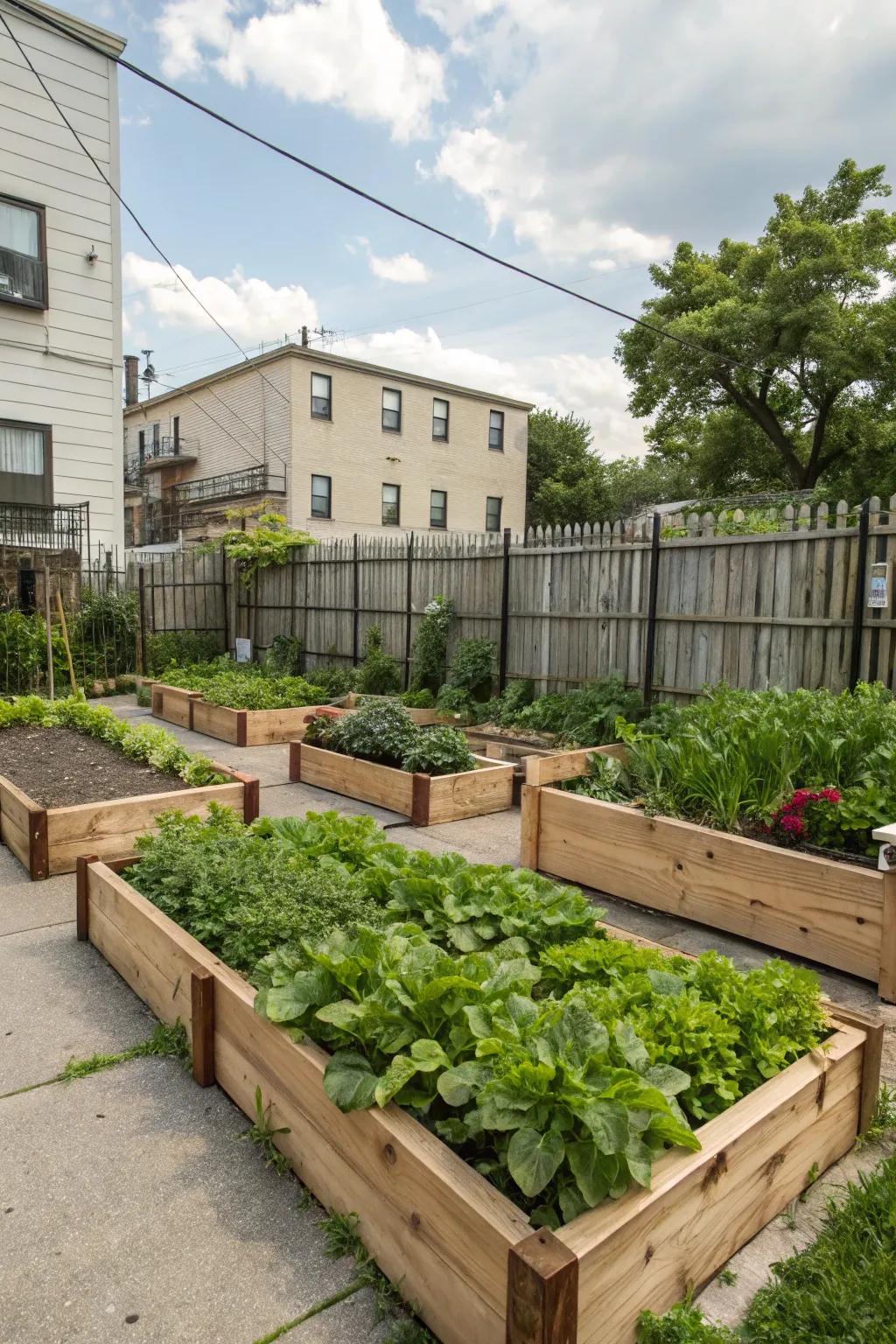
Raised beds are a fantastic way to optimize both space and soil quality. I swear by them in my own garden; they keep things organized and make for easy growing.
These products might help:
- Wooden Raised Garden Bed Kit: Enhance your gardening efficiency with this easy-to-assemble wooden raised garden bed kit.
- Organic Potting Soil: Boost your plant growth using nutrient-rich organic potting soil tailored for raised beds.
- Garden Tools Set: Equip yourself with a durable garden tools set perfect for maintaining raised beds.
4. Vertical Gardens for Tight Spaces
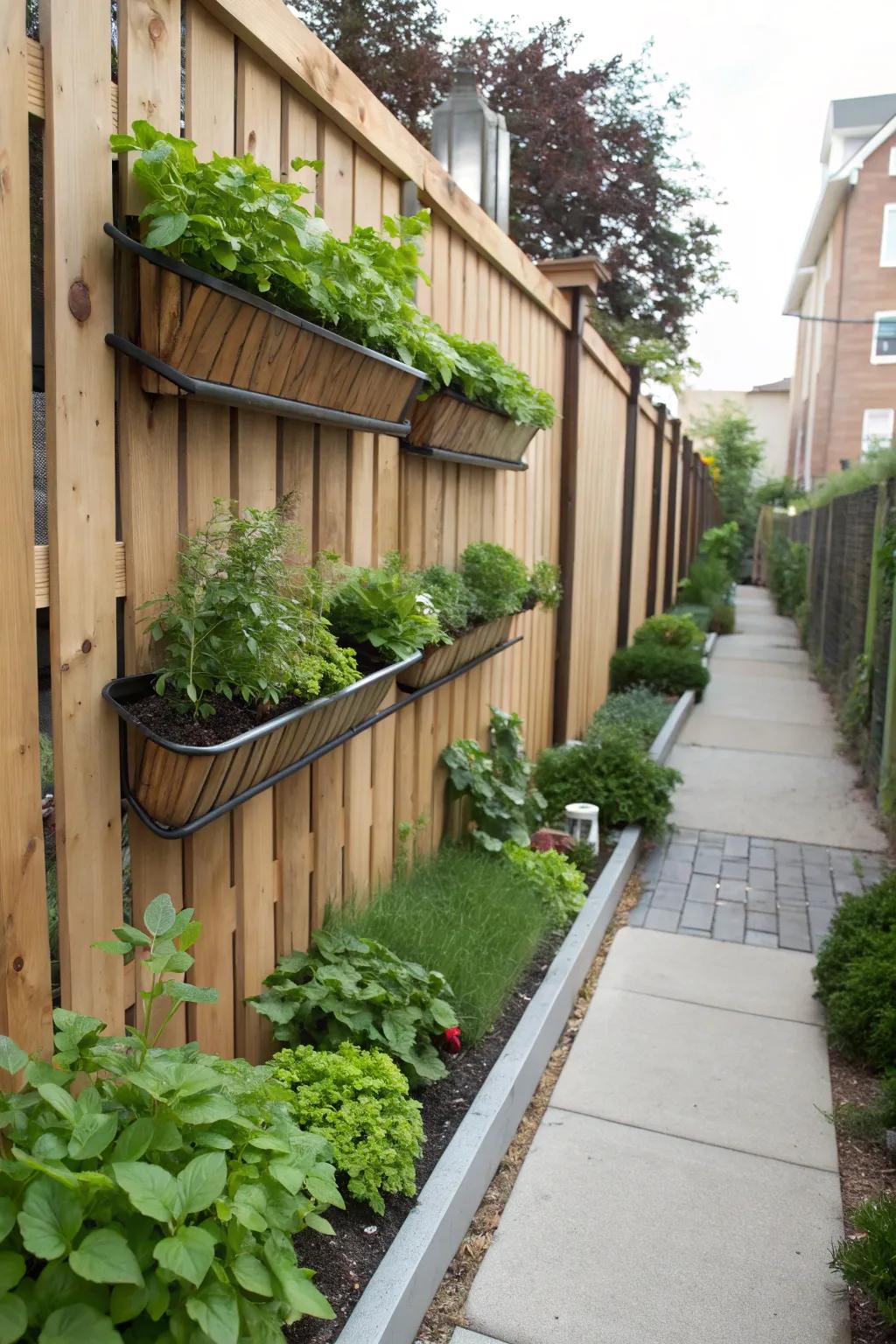
Vertical gardening is your best friend when you’re short on space. I love using wall-mounted planters to grow herbs and leafy greens right up the side of my garden shed.
These products might be useful:
- Wall-Mounted Planter Kit: Maximize your garden space by installing these wall-mounted planters for herbs and greens.
- Vertical Garden Shelf: Transform narrow spaces into lush gardens with this efficient vertical garden shelf.
- Hanging Herb Garden Planter: Create a thriving herb garden with this simple, space-saving hanging planter solution.
5. Container Magic
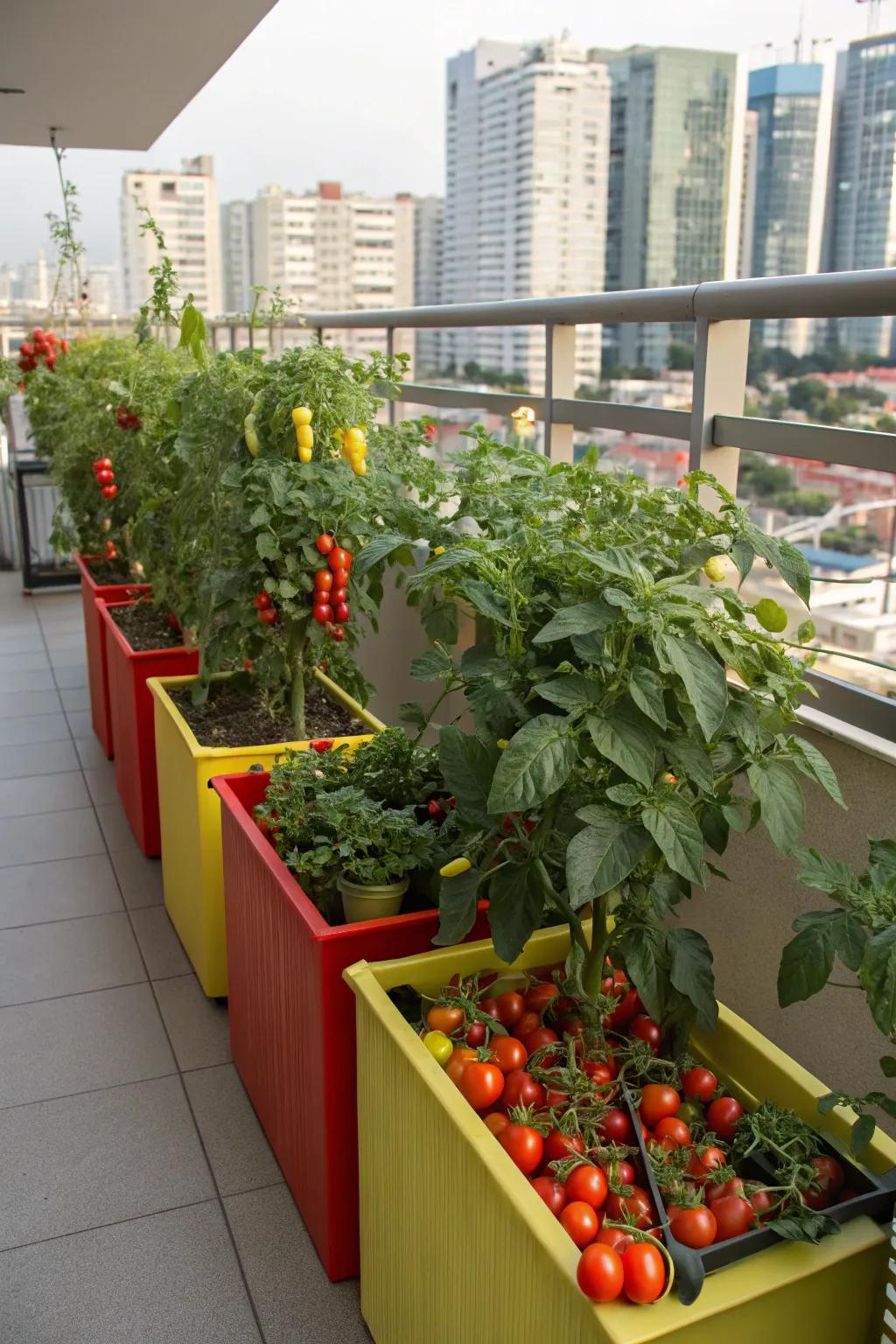
Containers let you garden anywhere, from patios to rooftops. I always keep a few pots of tomatoes and peppers on my sunny balcony for easy access.
A few things you might like:
- Self-Watering Planter Box: Keep your plants hydrated effortlessly with this self-watering planter. Perfect for busy urban gardeners.
- Compact Vegetable Gardening Kit: Start your balcony garden effortlessly with a convenient and complete vegetable gardening kit.
- Heavy Duty Tomato Cage: Support your growing tomatoes with sturdy cages designed for limited space in urban settings.
6. Aesthetic Raised Beds
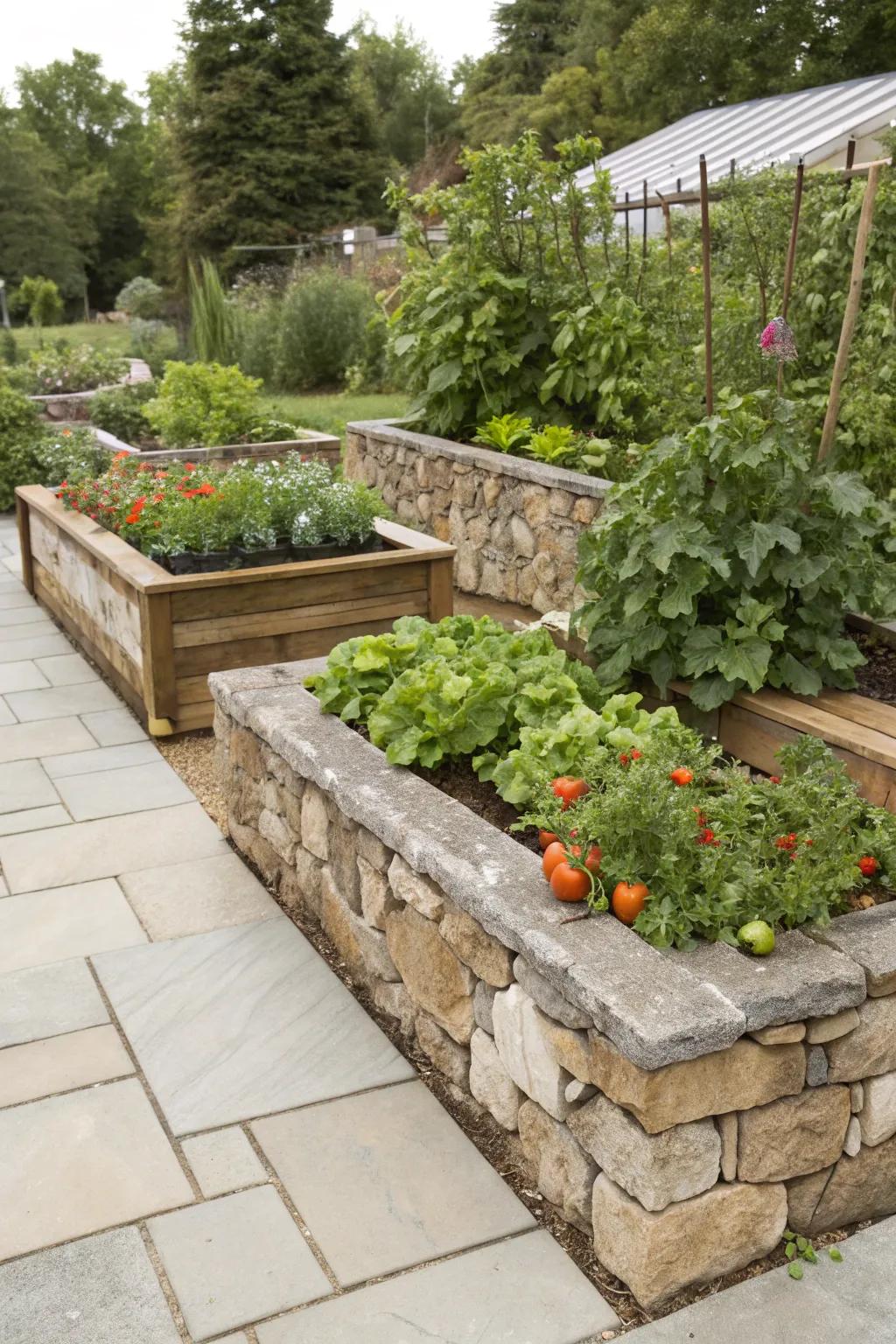
Combine function and beauty by designing decorative raised beds. I used a mix of stone and wood in mine, and it elevates the entire garden’s look.
A few suggestions:
- Stone Garden Edging: Enhance your garden’s elegance with durable stone edging, creating a visually appealing boundary.
- Wooden Raised Bed Kit: Craft a charming and functional space with this easy-to-assemble wooden raised bed kit.
- Decorative Garden Trellis: Add vertical interest and support to climbing plants with a stylish garden trellis.
7. Rooftop Retreats
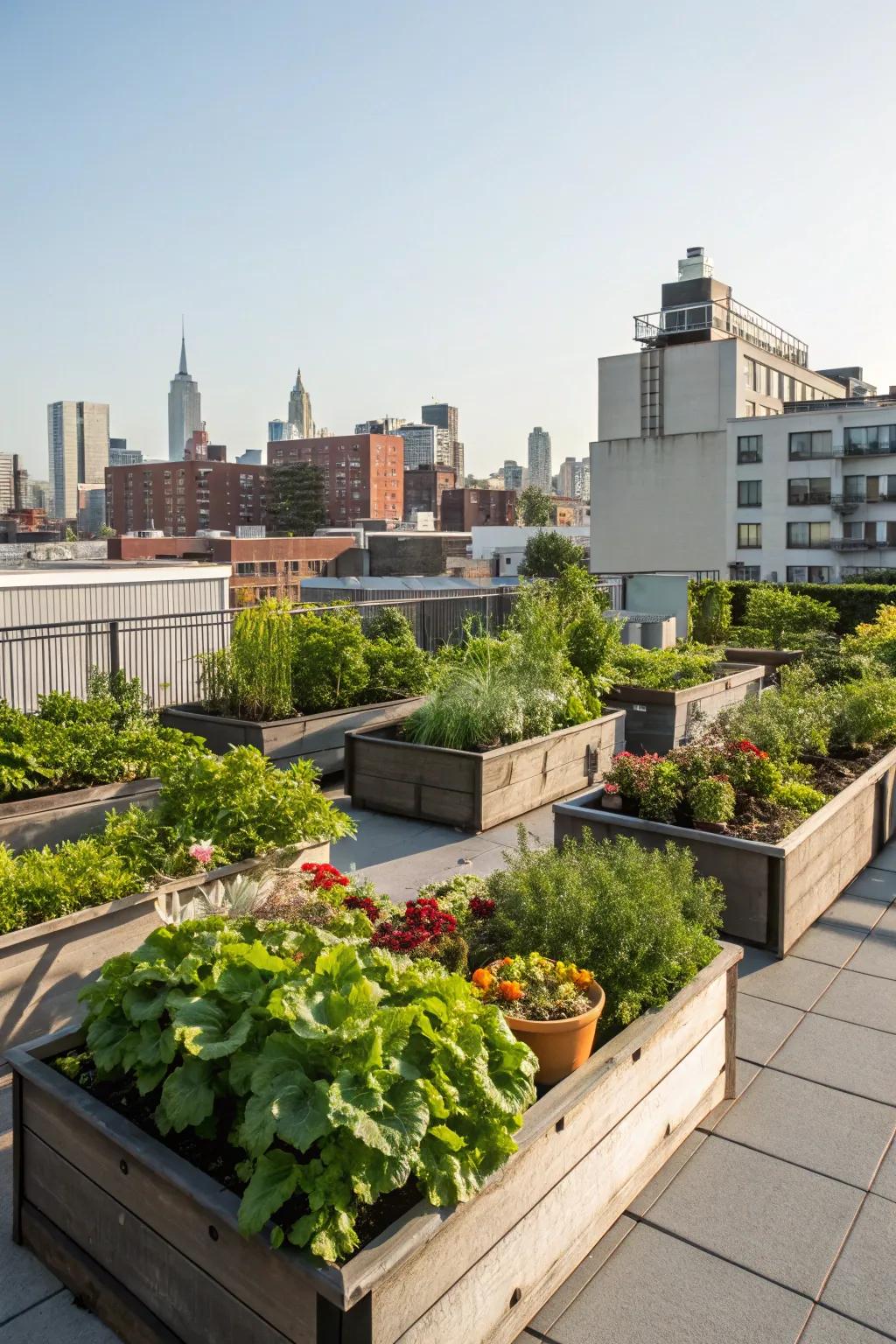
If you have roof access, use it! Rooftop gardens are my go-to for maximizing space and catching all-day sun.
You might like:
- Raised Garden Bed Planter Box: Maximize your rooftop space with a durable planter box, perfect for vegetables and herbs.
- Gardening Tool Set: Equip yourself with essentials; cultivate and maintain your garden with ease.
- Automatic Drip Irrigation Kit: Ensure consistent watering with an easy-to-use drip irrigation system, ideal for busy urban gardeners.
8. Galvanized Steel Chic

Galvanized steel planters offer durability with a modern twist. They’re a staple in my garden for their sleek look and sturdy build.
A few choices to try:
- Rectangular Galvanized Steel Planter Box: Add modern flair to your garden with a durable steel planter perfect for urban spaces.
- Round Galvanized Steel Barrel Planter: Enhance your terrace with a stylish steel barrel planter for a contemporary garden look.
- Elevated Galvanized Steel Garden Bed: Transform your urban space using elevated steel beds for easy and stylish gardening.
9. Self-Watering Containers
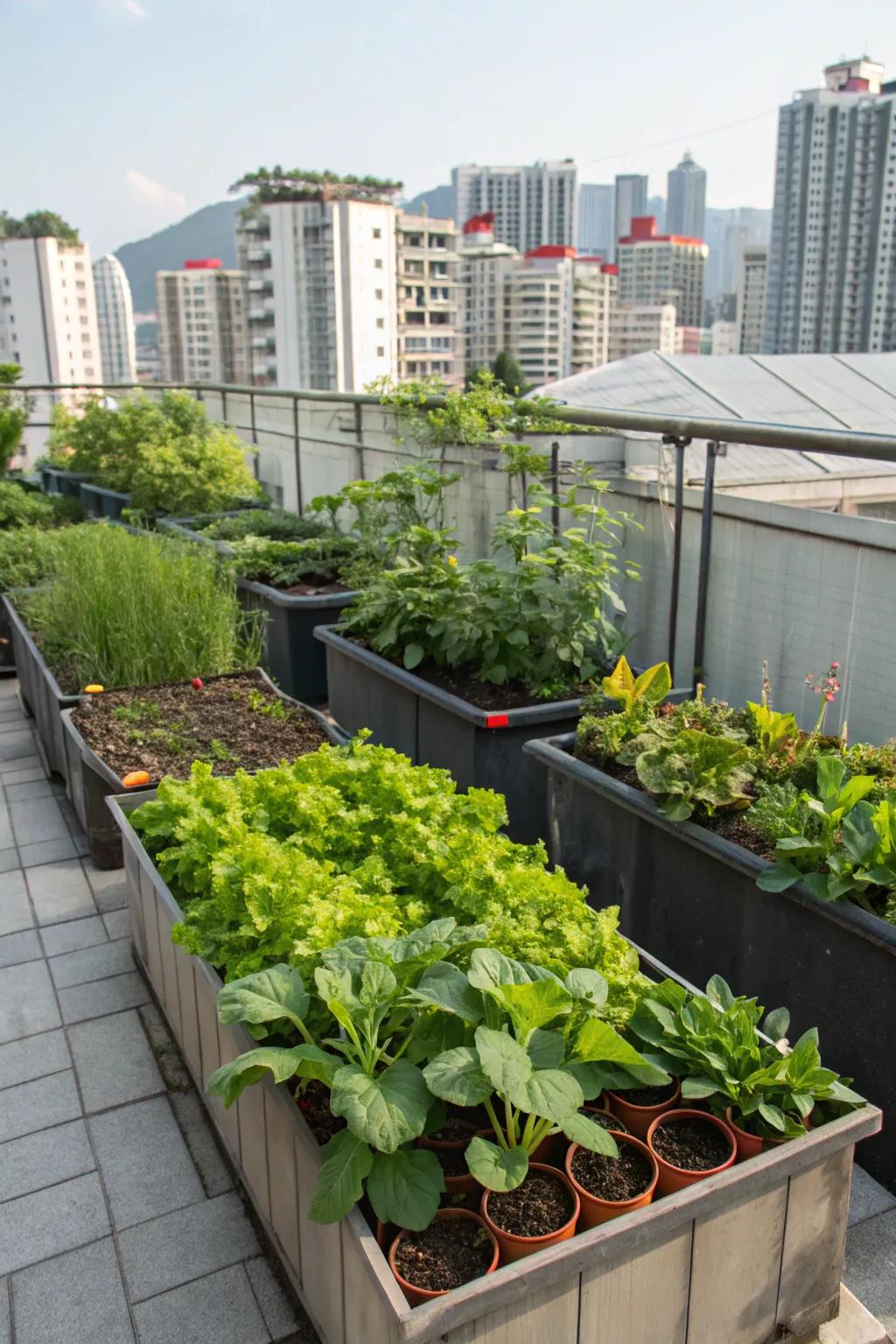
Self-watering containers are a lifesaver for busy gardeners like me. They keep my plants hydrated and thriving, even when I’m away.
Consider these options:
- Self-Watering Planter Boxes: Keep your plants hydrated effortlessly with these self-watering planter boxes. Perfect for busy gardeners.
- Self-Watering Pot Inserts: Transform any pot into a self-watering container with these convenient inserts. Ideal for small spaces.
- Self-Watering Herb Planters: Ensure your herbs stay fresh with minimal effort using these self-watering herb planters.
10. Companion Planting for the Win
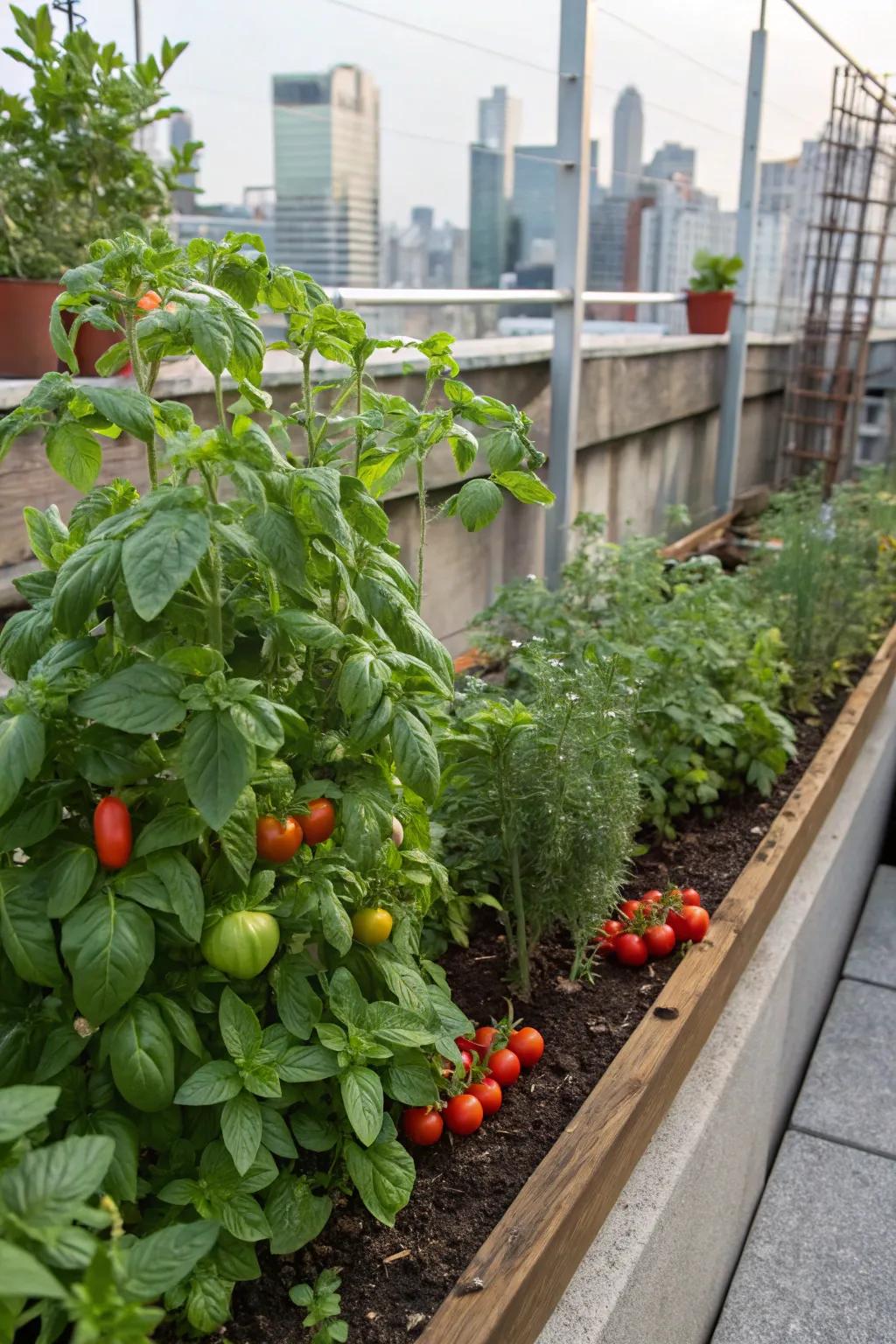
Pairing plants like tomatoes and basil can enhance growth and flavor. In my garden, these pairs not only thrive but also keep pests at bay.
Possibly handy products:
- Raised Garden Bed: Elevate your crops and maximize space with a durable, weather-resistant raised garden bed.
- Organic Vegetable Fertilizer: Boost your tomato and basil growth with nutrient-rich, organic vegetable fertilizer. Ideal for vibrant crops.
- Tomato and Basil Seeds Pack: Start companion planting with a high-quality tomato and basil seed pack, perfect for home gardens.
11. Hanging Basket Delights

Hanging baskets aren’t just for flowers; they’re perfect for strawberries and trailing tomatoes. I have them hanging from my porch, and they’re easy to harvest.
Useful items to consider:
- Hanging Planter Basket: Elevate your porch garden with sturdy hanging baskets for easy strawberry and tomato harvesting.
- Strawberry Plant Starter Kit: Kickstart your hanging garden with a ready-to-grow strawberry plant kit at home.
- Indoor/Outdoor Garden Hooks: Secure your hanging baskets with strong, weather-resistant garden hooks for year-round use.
12. Window Box Wonders

Even a windowsill can be a garden with the right box. Mine are filled with lettuce and radishes, making lunchtime salads a breeze.
Items that may come in handy:
- Rectangular Window Box Planters: Turn your windowsill into a lush garden with these durable and stylish planters.
- Organic Vegetable Seeds Pack: Start your own fresh salad garden with this variety pack of organic vegetable seeds.
- Adjustable Window Shelf Brackets: Easily secure your window boxes with these sturdy and adjustable shelf brackets.
13. Efficient Space Utilization
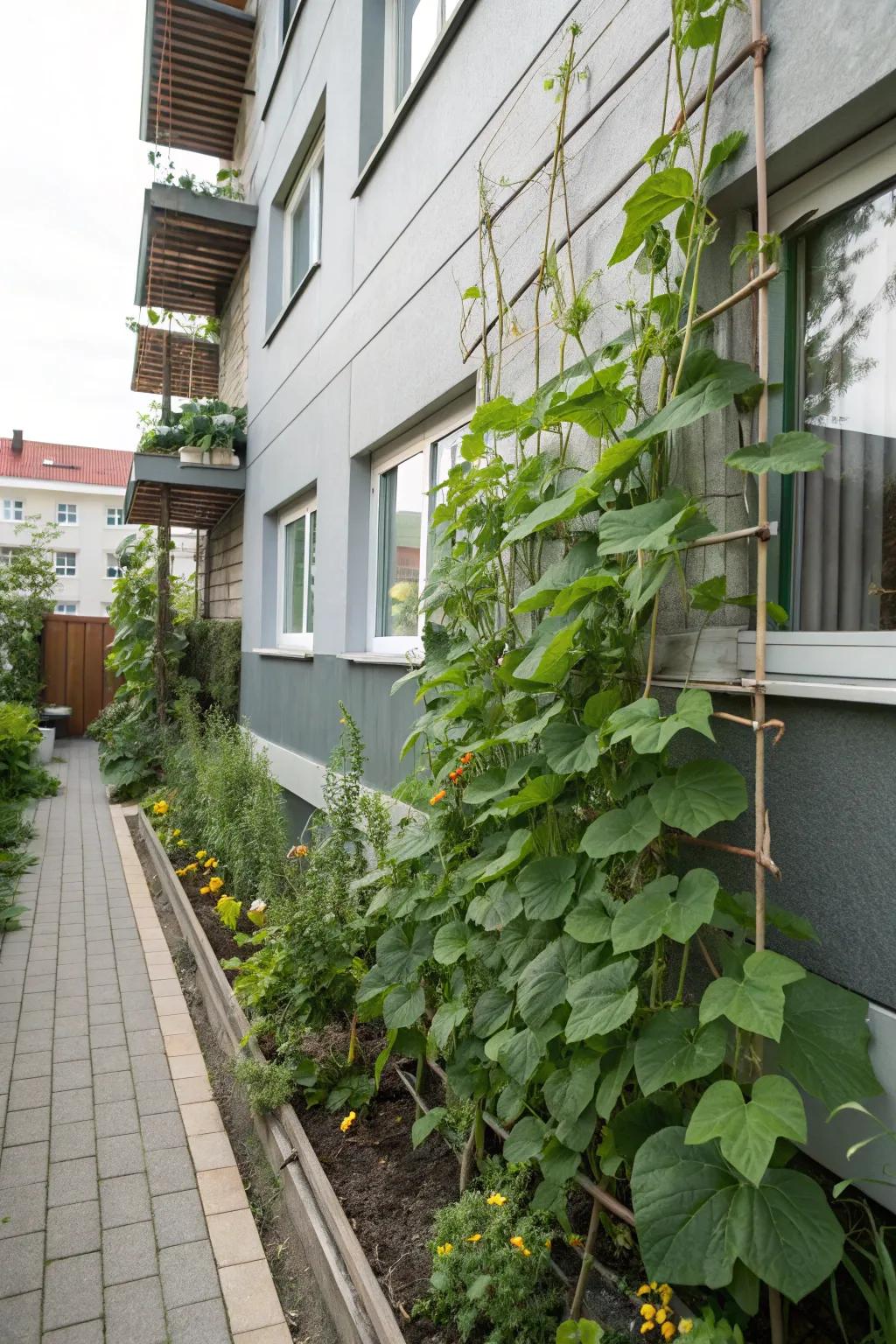
Every nook and cranny can be a vegetable haven. I’ve turned the side of my house into a lush corridor of climbing beans and cucumbers.
Check these products out:
- Expandable Trellis for Climbing Plants: Enhance vertical growth with a sturdy trellis, perfect for climbing beans and cucumbers.
- Vertical Garden Planters: Maximize limited space with stackable planters ideal for urban gardening.
- Self-Watering Planter Boxes: Ensure consistent moisture for your plants with convenient self-watering planter boxes.
14. Recycled Bottle Gardens
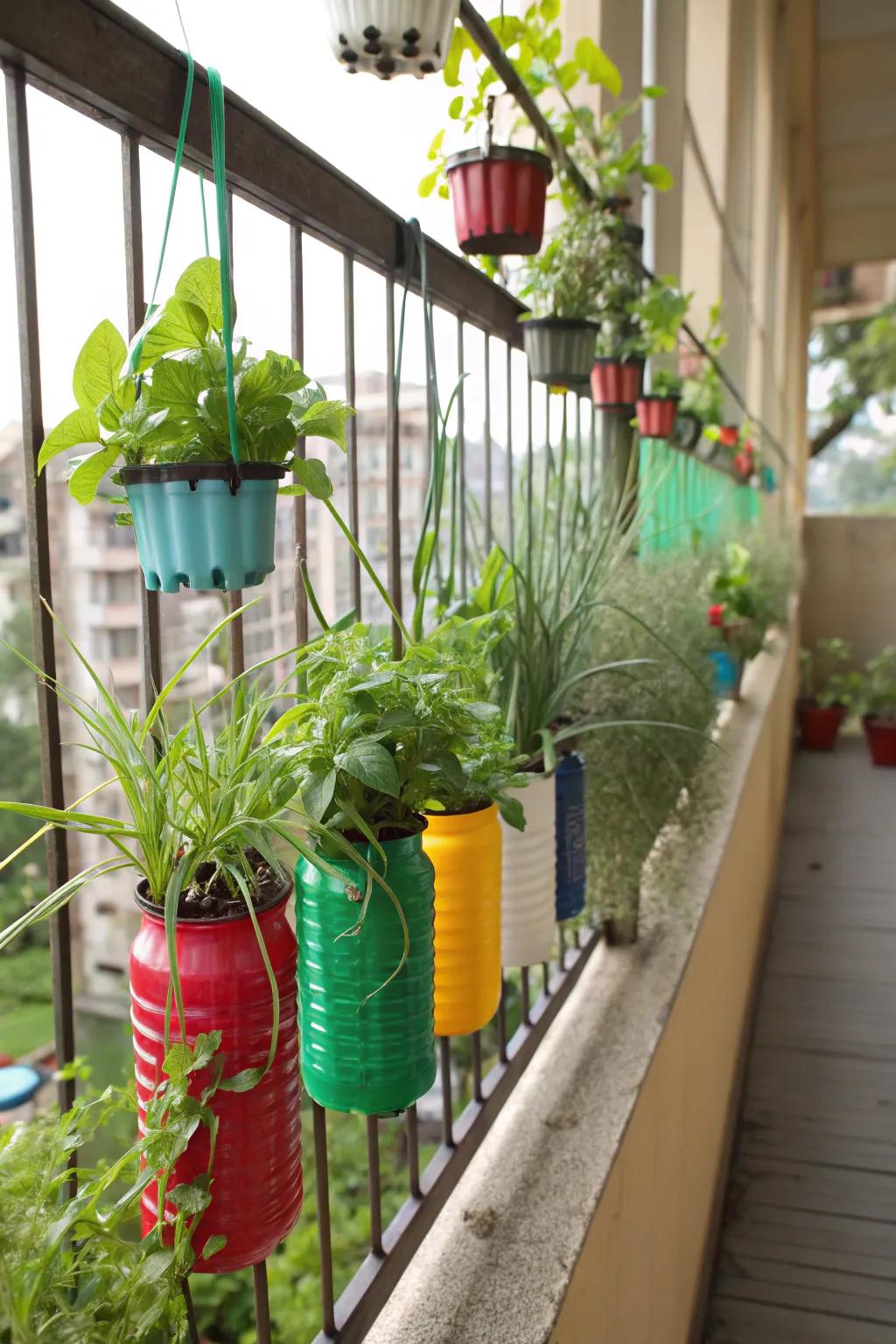
Get eco-friendly with recycled bottle planters. I have a few hanging on my balcony rail, growing herbs like mint and parsley.
Possibly helpful picks:
- Hanging Planter Brackets: Securely mount your recycled bottle planters with these sturdy hanging brackets for easy installation.
- Gardening Tool Set: Maintain your bottle garden effortlessly using these convenient and versatile gardening tools.
- Organic Potting Soil Mix: Ensure healthy plant growth in your recycled bottle garden with this premium organic soil mix.
15. DIY Planter Innovations
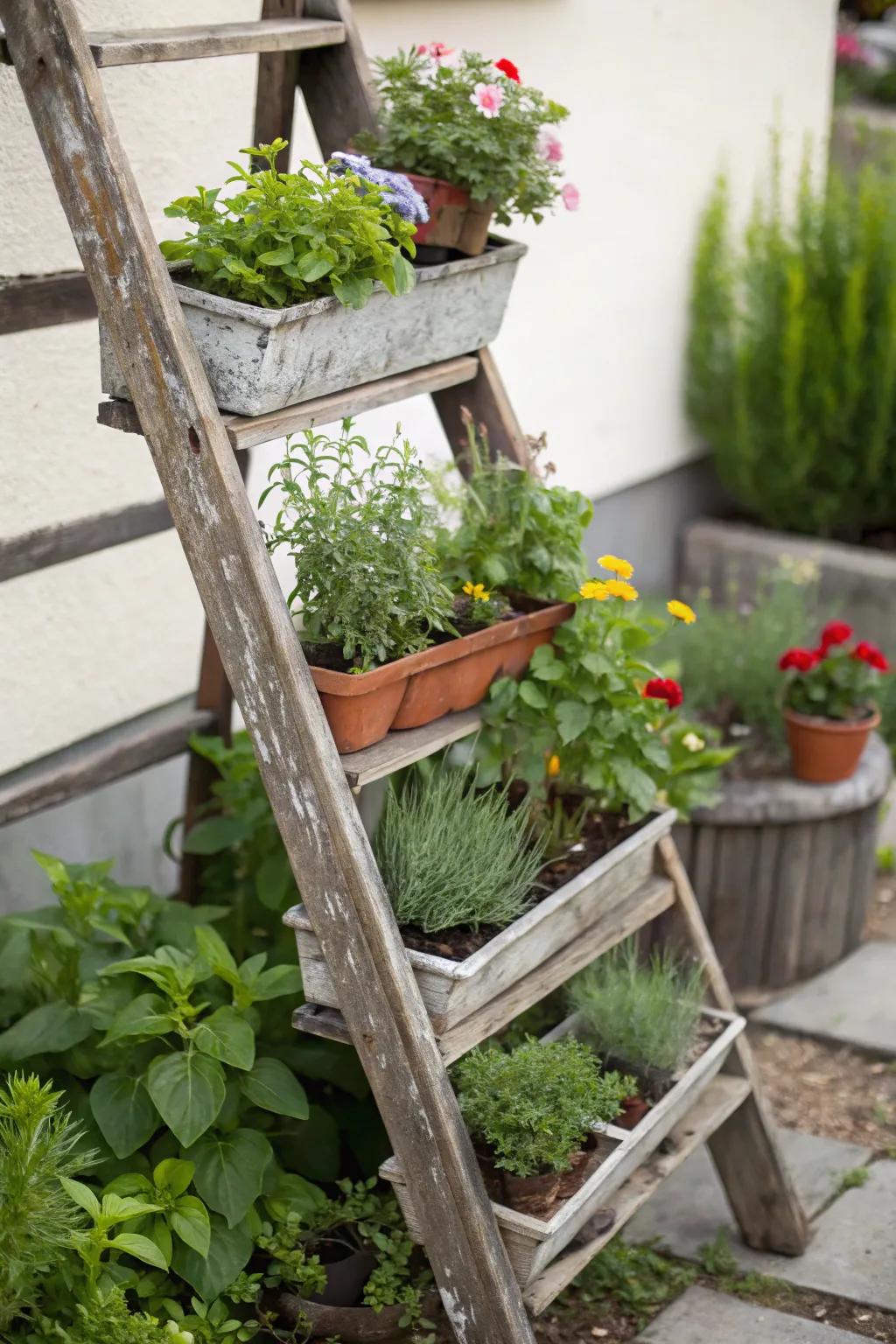
Upcycling materials into creative planters is both fun and sustainable. I once transformed an old wooden ladder into a tiered garden stand, and it’s still a conversation starter.
Explore these options:
- Set of Rustic Wooden Planter Boxes: Elevate your garden with charming wooden planters, perfect for herbs and flowers.
- Outdoor Plant Supports or Trellises: Enhance growth and beauty with sturdy plant supports for your climbers and vines.
- Universal Plant Pot Drip Trays: Protect surfaces with durable drip trays, ensuring a mess-free gardening experience.
16. Hydroponic Systems for Urban Spaces
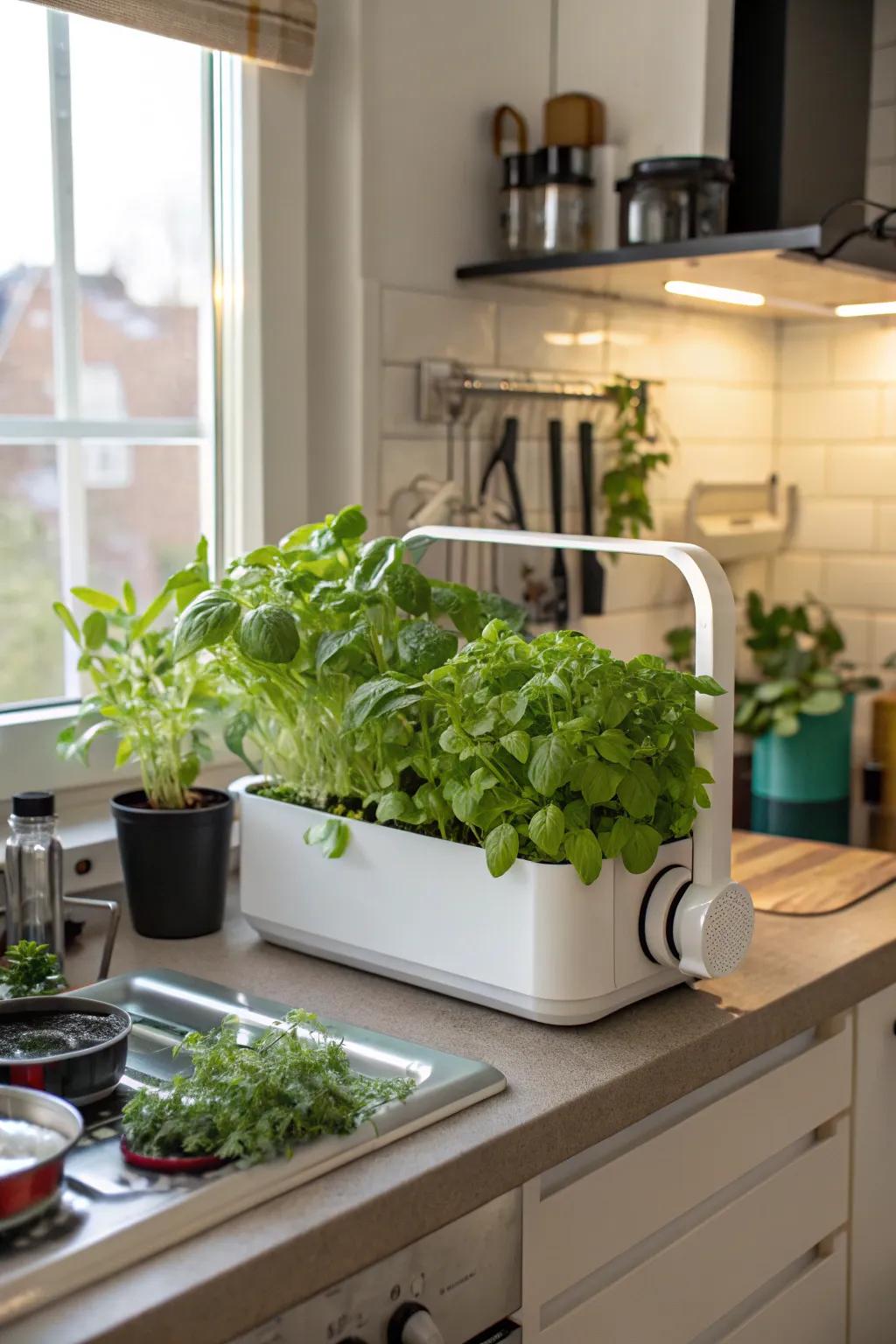
Hydroponics is a futuristic way to garden without soil. I’ve experimented with a small setup in my kitchen, and it’s a fun way to grow greens.
Give these a look:
- Countertop Hydroponic Herb Garden Kit: Bring fresh flavors to your kitchen with this compact hydroponic herb garden kit.
- Self-Watering Indoor Plant System: Enjoy easy gardening with a self-watering system that keeps your plants thriving effortlessly.
- LED Grow Light for Indoor Plants: Maximize plant growth with energy-efficient LED lighting, ideal for indoor hydroponic setups.
17. Wheelbarrow Wonders
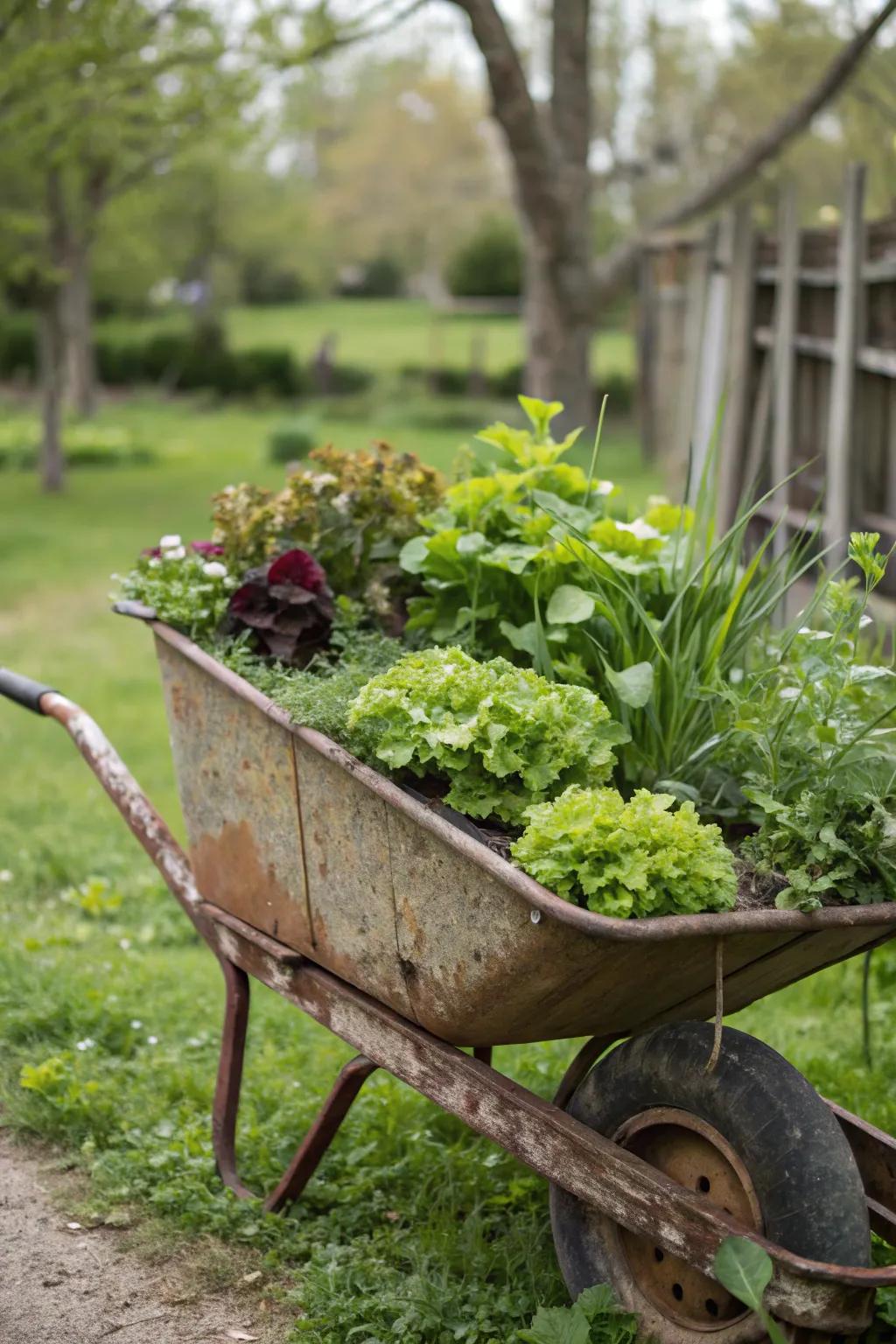
Turn an old wheelbarrow into a mobile vegetable patch. I love wheeling mine around to catch the best sun spots throughout the day.
May just do the trick:
- Garden Wheelbarrow: Easily transport your mobile vegetable garden to the sunniest spots in your yard.
- Organic Potting Soil: Nourish your plants with rich, organic soil for healthier, thriving vegetables.
- Vegetable Seed Kits: Start your mobile garden with a variety of fresh, easy-to-grow vegetable seeds.
